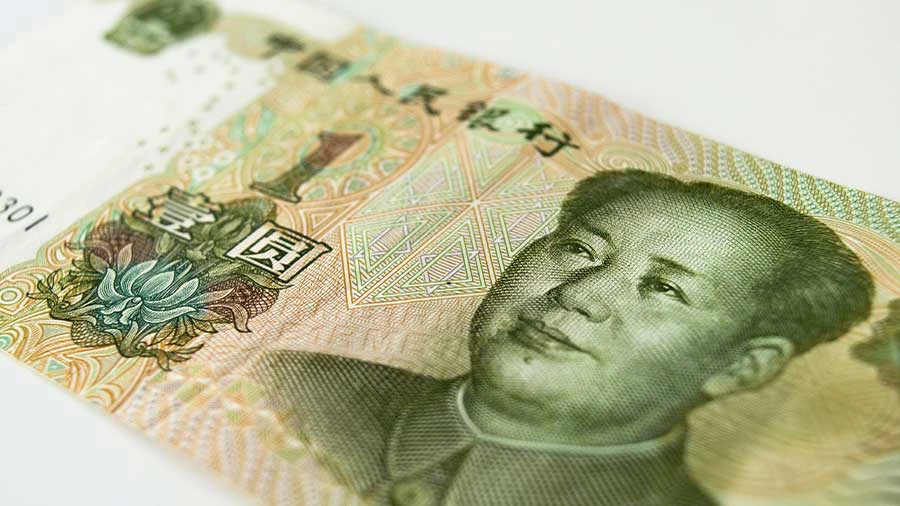China appears well-positioned to become a prominent yacht market, given its 14,484km-long coastline and a class of millionaires expected to cross the 20 million mark by the mid-2020s. Despite this, however, sales have been disappointing in the last 3-5 years due to high import tax and the inability of manufacturers to respond to Chinese client demands. In this article, we provide a general overview of China's yacht market and discuss the differences in business outlook according to key stakeholders, ranging from optimism over market growth potential or concerns about limited domestic prospects. We also discuss the recent entry of Chinese capital in the industry and how Chinese companies are manufacturing for non-China markets. Finally, we look at opportunities for foreign investors in China's boat market, including prospects for small and mid-cap companies, and showcase the success cases of Italian companies.
UPDATE: On August 18, 2022, the Ministry Industry and Information Technology (MIIT), together with the National Development and Reform Commission (NDRC), the Ministry of Finance (MOF), the Ministry of Transport (MOT), and the Ministry of Culture and Tourism (MCT), jointly released on the Guidelines on Accelerating the Development of Cruise and Yacht Equipment and the Industry (Guidelines), clarifying China’s roadmap for the development of the yacht industry through 2025. More details are provided below.
While North America and Europe remain in the lead as the world’s largest yacht consumers, the Asia-Pacific region has rapidly become one of the fastest-growing yacht markets. The yacht market in Asia has been skyrocketing post-pandemic, with increased purchases and a growing interest in sailing – sparking what industry experts define as a 'boom'. On the one hand, countries like Taiwan and China have increased their market share with new builds by locally-based shipyards. However, boat sales to the region are also on the rise.
As of 2021, Asian ownership of superyachts over 40 meters in service accounted for 5.8 percent of the global superyacht fleet. The number of Asian-owned yachts has progressively increased, from 91 at the beginning of 2016 to 109 at the start of 2021. Countries like Singapore have become active once again in the yacht sales ad brokerage markets after a slow period during the pandemic that triggered international and regional border closures.
In China, heightened living standards have led to the increasing demand for luxurious consumer goods, including in the boating industry. According to the China Transport Association's Cruise Yacht Branch, the total number of yachts in China will increase from 38,100 to 163,510 between 2020 and 2025.
China’s yacht market: an overview
Few geographical regions offer the superyacht sector as much room for expansion as the Chinese market does. China has a vast and increasing pool of potential superyacht purchasers, although the country is still in the early stages of yachting growth in terms of domestic infrastructure and ownership. It could still be the right time for such a high-potential market to flourish due to factors like the increase in the country’s per capita purchasing power and that of its ultra-high-net-worth (UHNW) population.A 2021 wealth report revealed the 10 countries with the highest increase in their UHNW population in 2020 – the so-called ‘top 10 riders’ – with China leading the group at 16 percent growth. Furthermore, in 2021, China surpassed the United States to become the world's first country with over 1,000 billionaires. The research highlighted that, despite the trade war and the pandemic, China was able to add 259 billionaires to its list, surpassing other nations like the US, India, and Germany.
With a large number of prospective consumers, China's relatively new market is even more attractive for foreign businesses. New yacht manufacturers, brand sales agents, yacht customers, private clubs, and exhibits have sprung up throughout the country in recent decades. Meanwhile, China's boat manufacturing keeps rising steadily, from 29,100 units produced in 2011 to 48,300 units in 2015. China's yacht industry is estimated to reach US$15.1 billion in 2027, accounting for 17.8 percent of the worldwide market and growing at a CAGR of 3.9 percent between 2020 and 2027.
Less stringent regulations demonstrating the government's commitment to the sector
Many positive government efforts linked to the yachting industry and maritime activities, in general, have lately been enacted, and China is seeing a trend of loosening regulations. At the outset of this decade, two regulatory bodies – the Ministry of Transport and the Maritime Safety Administration (MSA) – announced new, more liberalized criteria and standards for yacht registration and overseas-yacht entry/exit procedures.More limitations on boat ownership have been abolished in recent years, and clear maritime traffic legislation has been adopted. The increase of the navigability range, the streamlining of the examination/approval processes, and the inclusion of non-resident yacht registrations are the three most recent major amendments to the rules. These key developments show the government's commitment to the sector's growth.
Also, as wealthy Chinese yacht owners spend about 10 percent of the yacht's value on maintenance, a large portion of this wealth is reinvested in the local economy. This not only is a great boost for regional GDP but is also in line with the government’s will of shifting its economy away from production to consumption. It has likely prompted Chinese officials to ease the cumbersome registration process for importing a yacht into the country, as well as the requirements for traveling between provinces. Yachts registered in Hong Kong and Macao, for example, were allowed to sail in China's Pearl River Delta beginning 2018. The first cross-border sailing program has also increased boat orders in the Chinese Mainland by 20 percent to 30 percent.
Accordingly, The State Council Office evaluated the Guidance on Tourism Industry Acceleration and drafted a National Tourism and Entertainment Outline (2013-2020) in which measures were taken to improve the infrastructure for yacht marinas and cruise terminals, as well as encourage the growth of tourism products.
Yacht market more prosperous in certain regions than others: The case of Hainan Free Trade Zone
The yacht business in Hainan Province flourished in 2021 – the Sanya Yachting Association revealed that Sanya, China's tropical island and premier destination for luxury tourism, hosted almost 160,000 yacht trips, up 47 percent compared to 2020. Moreover, by the end of 2021, the number of new yachts registered reached 323, surging 202 percent year on year.This increase is partly due to the Overall Plan for the Construction of Hainan Free Trade Port (“the Masterplan”) that was released in June 2020, which stipulates that by 2025, there will be no tariffs on the island's import of ships for transportation, tourism, and other purposes. Import tariffs, the value-added tax, and the consumption tax will all be waived for foreign exporters – which will effectively cut prices for foreign-made products.
Success stories: Italian yacht businesses in China
With 407 projects and super-yachts totalling 14,994 meters in development in 2021, Italy continues to top the annual report issued by the nautical newspaper ShowBoat International. Azimut-Benetti, Sanlorenzo, and Ferretti Group occupy the first, second, and third place, respectively.Despite having eight well-known brands, six shipyards, and over 170 years of history, Ferretti Group is today the only rival in its business to provide a comprehensive range of yachts ranging in size from 8 to 95 meters, and it is very active in China's yacht market. After defaulting in 2009, the company was bought in 2012 by SHIG–Weichai Group, a large Chinese machinery manufacturer that currently controls 75 percent of the Italian shipbuilder.
Following the acquisition, the company focused on growing into new markets. It made a great impression in the Asia-Pacific region in the first quarter of 2020, selling about US$73 million and negotiating two new dealership agreements for the distribution of its yachts in Malaysia, Cambodia, and Laos. The Italian shipbuilder now has offices in Hong Kong and Shanghai, as well as a fully equipped after-sales facility, to meet the needs of its customers in the region. It also inked a Memorandum of Understanding with the Sanya Central Business District (SCBD) to collaborate with the government on the development of the local industry and China's yacht market in general.
Other than larger and well-established companies, opportunities are there for everybody. According to Giovanni Lovisetti, Senior Associate on the International Business Advisory at Dezan Shira & Associates’ Milan Liaison office, "while huge companies can approach Asian markets by themselves – such as Fincantieri, who has already established a presence in Hainan – several smaller companies are just waiting for the right stimulus to take the first step towards Asia." This might be the right time for them to step in.
Roadblocks to the development of China’s yacht market
High import taxes on foreign boats are one of the primary hurdles to the development of China's yacht sector. The country has a 43.65 percent tax on boats – although recently reduced to 38.1 percent for motor yachts and 35.6 percent for sailing yachts above 8 meters. Furthermore, since the beginning of the government's Anti-Corruption Campaign in 2012, potential customers have been reluctant to flaunt their wealth, preferring to keep a low profile and avoid public scrutiny.Another considerable barrier to Chinese high-income individuals buying private boats in the Mainland, is the lack of well-equipped marinas, ship repair yards, spare parts suppliers, and all other necessary (and expensive) infrastructure for yacht upkeep and mooring.
Lastly, in 2015, China strengthened its regulations for yachts travelling in its national waters, restricting the number of passengers onboard to a maximum of 12 people – which made it impossible to arrange large parties and gatherings on board since the crew alone counts six members. Furthermore, China's southern shoreline land is a particularly difficult marine zone due to ongoing territorial conflicts with neighboring states.
As a result, several of the world's most prestigious shipbuilders, like Sunseeker and Ferretti Group, have shuttered their showrooms in Mainland China or eliminated the country from their core target markets, despite their Chinese ownership. Regardless, those companies continue to sell boats to Chinese customers for delivery outside of the Mainland.
Understanding the Chinese market and its cultural context
Four purposes for boats are sailing, sports, leisure, and entertainment. For wealthy Chinese buyers, the latter would be the most common option. Given that the high-income Chinese population has little interest in sunbathing, the primary aim of these luxury boats in the contemporary setting would be to serve as a business frontier for hosting meetings, parties, and other business-related events. Yachting, however, has a bad cultural connotation as compared to other activities in a wealthy society.According to market research, affluent Chinese people like golf, swimming, spas, and yoga as leisure activities, since they are well-known in Chinese culture for providing health benefits, and are thus appealing. Yachting, on the other hand, does not provide comparable physical benefits in the traditional Chinese context. Such cultural premises are fundamental when considering the gap between target customers and the industry culture.
All things considered, it is not impossible for Chinese customers to shift their perspective since the country’s shopping habits and tastes are fast changing because of the ongoing rise of HNWIs. This means that tastes are subject to change and may be molded if an industry pursues them aggressively. In reality, a lack of brand familiarity and awareness provides first-mover brand opportunities.
The future of China’s yacht industry
All in all, between financial crackdowns and setting up zones such as Hainan FTZ, what is the right space for the yacht market to develop? China's financial crackdowns continued throughout 2021, with Beijing slamming for-profit education, tanking Ant Financial and Didi IPOs, or bringing the entertainment and gaming business under control, and harnessing local digital titans. As a result, in the era of "Common Prosperity," it's worth considering whether China's yacht market can take off and grow.Yet, the central government's desire to boost consumption and encourage tourism (including yacht tourism) creates unprecedented potential for the boat sector in the coming years, at least for small-to-mid-sized boats. The formation of the Hainan Free Trade Zone and the development of a new port have the potential to turn the island into a hub for China's yacht culture. The number of registered boats in Sanya has increased from 10 to 500 in the previous decade alone, and yacht rental services have grown in popularity in China, enhancing yacht culture among both the Chinese middle and high-income classes.
Further, according to the Guidelines on Accelerating the Development of Cruise and Yacht Equipment and the Industry (Guidelines) jointly released by the MIIT and other ministries on August 18, 2022, there are four development goals to achieve in the yacht industry by 2025: improving the design and construction capacity, refining the foundation of the equipment industry, expanding the demands in the consumer market, and strengthening cooperation and talent cultivation. Sanya is expected to be transformed into a home port for international cruises, outlining several international first-class cruise tourism destinations. Priority is attached to the development of water tourism resources in areas such as the Circum-Bohai Sea Economic Zone, the Guangdong-Hong Kong-Macao Greater Bay Area, the coastal city cluster that links Guangdong, Fujian and Zhejiang, the Hainan Free Trade Port, the Yangtze River Economic Belt, the Pearl River-West River Economic Belt, and the Grand Canal Cultural Belt. Meanwhile, Hainan is encouraged to pilot a yacht leasing business. The Guidelines also called for building teams of professional talents along the whole industry chain, covering the design, construction, operation, and management of cruises, yachts, and tourist passenger ships, as well as related tourism services and legal consulting.
Catering to specific needs
With China's yachting culture still in its infancy, yacht makers should concentrate on meeting the expectations of Chinese clientele, from emphasizing the design of entertaining rooms to making it easier to hire superyachts on a short-term basis. The scarcity of skilled Chinese Mandarin-speaking specialists and Chinese designers, on the other hand, is stifling the growth of China's boat sector. Foreign shipbuilding businesses should tailor their offerings to the demands and preferences of Chinese boat buyers, keeping in mind lifestyle and cultural preferences.For example, Chinese yacht owners seldom spend the night on board and prefer boats with leisure and recreational amenities like KTV (karaoke) rooms. Catering to such needs, which are specific to the Chinese clientele, is an essential part of challenging cultural differences and securing a spot in such a promising market.
This article was first published on June 21, 2022 and last updated on September 29, 2022.









